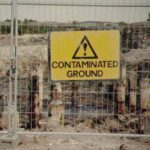BC Case Illustrates Difficulty in Proving ‘Innocent Acquisition’ Defence

Under the environmental laws, various people and entities can be held liable for cleaning up contamination, including current and former owners of contaminated property or property that’s the source of contamination. When asked to pay remediation costs, those parties may try to raise what’s sometimes called the ‘innocent acquisition’ defence. In essence, they argue that when they bought the property, it was already contaminated; they didn’t know or have reason to know it was contaminated; and they made appropriate inquiries and investigations into the prior ownership and uses of the property before buying it. In addition, they must not have caused or contributed to the contamination. But proving the innocent acquisition defence is harder than you may think. Here’s a look at a recent case form BC in which property owners unsuccessfully raised that defence.
THE CASE
What Happened: Residential property was contaminated by oil from a decommissioned underground oil tank on neighbouring property. The tank corroded and perforated, allowing the remaining oil in it to escape and migrate. The residential property owner sued the current owners and former owners of the neighbouring property for nearly $33,000 in remediation costs already incurred and an estimated $90,000 to complete the remediation. The defendants raised the innocent acquisition defence.
What the Court Decided: The Supreme Court of BC rejected the innocent acquisition defence. It ruled that the current owners were minor contributors who were 15% liable for the remediation costs, while the former owners were 35% and 50% liable.
The Court’s Reasoning: The court noted that the innocent acquisition defence is enshrined in Sec. 46(1)(d) of the Environmental Management Act. The Contaminated Sites Regulation explains that when considering whether a party undertook all appropriate inquiries into the previous ownership and uses of a site, and other investigations consistent with good commercial or customary practice, the court must consider the following:
- Any personal knowledge or experience of the owner as to contamination at the time of the acquisition of the property;
- The relationship of the actual purchase price to the value of the property if it was uncontaminated;
- Commonly known or reasonably ascertainable information about the property at the time of the acquisition; and
- Any obvious presence or indicators of contamination, or the feasibility of detecting such contamination by appropriate inspection at the time of the acquisition.
Here, the court found that neither the former or current owners could rely on the innocent acquisition defence. It explained that the former owners admitted that before buying the neighbouring property, they waived the requirement for a property disclosure statement, didn’t conduct any of the inquiries recommended by the property inspector as to the possible presence of an underground tank and didn’t make inquiries of any kind as to contamination. Also, by the time they bought the property, the contamination on the residential property had already been discovered, and warning signs and delineation cones had been displayed. Thus, the former owners knew or ought to have known that their property was also contaminated. In addition, after they bought the land, they were specifically told about the contamination and did nothing about it. As to the current owners, by the time they bought the property in question, the contamination was no longer a latent defect but a patent one. That is, explained the court, there was reasonably ascertainable information available about the property, including media reports on the contamination and an active MOE investigation into it. So the current owners also knew or should’ve known about the contamination [Dolinsky v. Wingfield, [2015] BCSC 238 (CanLII), Feb. 19, 2015].
ANALYSIS
Most jurisdictions have some version of the innocent acquisition defence, which is a sort of corollary to the polluter pays principle. In essence, the idea behind the defence is that while polluters should pay for the pollution they cause or contribute to, innocent people who buy land without knowing it’s polluted and having taken reasonable steps to discover any pollution should not pay for such pollution. But as the Dolinsky case shows, the standard for proving the innocent acquisition defence is fairly high and looks at not only what the parties actually knew about the contamination but also what they should’ve known. For example, the court in Dolinsky criticized the former owners for ‘turning a blind eye’ to the contamination. The lesson: When acquiring property, conducting appropriate and adequate environmental inquiries and investigations is critical.